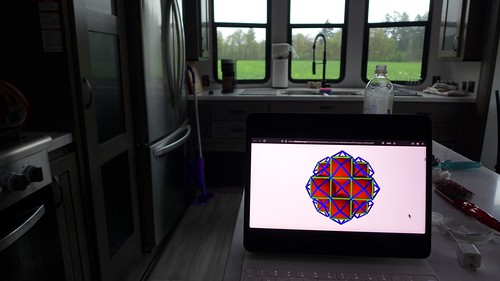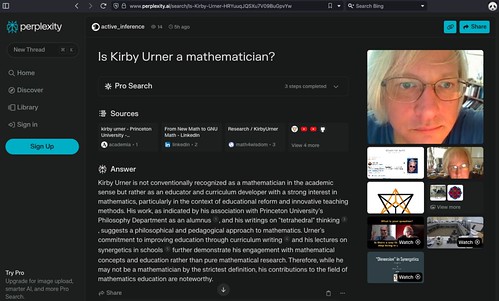We're still waiting for some enterprising blockchain company to choose the tetrahelix for a core animation. The successive blocks form the twisting path of face-bonded tetrahedra why not? Blocks are blocks. No one said the chained "blocks" have to be orthonormal, an aesthetic considered uncool in some circles, given the alternatives.
Gary Doskas is one of the current masters of tetrahelix lore and I ran the idea by him, but maybe he doesn't straddle the geomtech - fintech divide. Few do apparently, or we would have a lot more better toyz by now, counting computer games.
Clearly I've got tetrahedrons on my mind again, as I recently published a narrative to a couple listservs talking about the so-called "Goldberg Table" wherein Michael Goldberg summarizes what was known about space-filling tetrahedra up to the time of his publishing his paper.
The point of my Goldberg story was that Buckminster Fuller is repeatedly cut out of accounts where he's making serious contributions, either to virology, geometry, architecture or whatever, because there's always a convenient "inhouse luminary" better positioned to take the credit. From TrimTab (April 25, 2024):
It just so happened that Fuller's research carried him over territory being surveyed by professionals in many walks of life at the same time. Virology, the discipline, was bringing them together even more than architecture.
The price RBF paid for his comprehensivity (anticipating CJ's book) was not being best of the best in any of the various fields he was visiting, meaning one could always swap in a home team star come trophy day [1], leaving "good at skipping rocks" his only real claim to fame (I say that whimsic-sarcastically).
The dismissive attitude I'm circling is well-demonstrated by the lengthy reply we saw from Andrius:
The best we have is this Goldberg table. The point would be to show that polyhedra can fill space. Perhaps that would be useful for a model of dividing up conceptual space, which is actually what I do. But no, you have no interest in actually applying this math scientifically. Your interest is to validate Buckminster Fuller. An honest investigation would dive into that, what is that all about?
I have not been at all reticent to discuss my interest in validating Fuller's research. That America's premier futurist of the 1900s has been deplatformed by so many universities, after their milking his popularity when he could draw the big crowds, and paying students, is somewhat scandalous to say the least. Applewhite was always wondering how they got away with it, with impunity.
Quoting more from my TrimTab post:
Apologies if the ordering was confusing, between Fuller's compact vocab (mite, rite, bite...) and the Goldberg table of tetrahedral space-fillers coming to be known at the time. That slide (in my BEAST deck) is still evolving.
Speaking of Michael Goldberg, Applewhite said he'd met him (I recall asking him about Goldberg specifically, given his key role in our narrative) adding "he didn't have a mean bone in his body" meaning in that context Ed didn't believe the guy had any malevolent intention of deliberately messing with Fuller's self promotion / reputation i.e. he was no kind of villain or foe.
Easy to believe I'd say. "Space filling tetrahedrons" is a pretty obvious topic, when you get right down to bare bones and/or brass tacks, as are subdivisions of a sphere using variable frequencies. "Aristotle was right, remember the MITE" could be are our high school chant, in some weird sci-fi School of Tomorrow. Cue cheerleaders.
This was the footnote (see above):
[1] per Ed, Fuller was especially hurt when a certain Scientific American article summarizing recent breakthroughs in the field of virology, skipped mentioning him completely. I got to see some of the primary materials.









